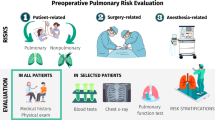Abstract
Objective
To identify the predictors of pre-operative anxiety in school-going children in India.
Methods
A prospective observational study was done at a tertiary care teaching hospital. Children aged 7–12 y scheduled for elective surgery and their parents were enrolled. Pre-operative anxiety in children and parents was assessed using STAI-C and STAI-P questionnaires respectively. The child’s anxiety in pre-op room, at the time of parental separation and induction of anesthesia were assessed using m-YPAS scale. Possible predictors of anxiety under ‘individual’, ‘social’ and ‘healthcare’ domains were analyzed using logistic regression. The quality of mask induction of anesthesia was assessed using Induction Compliance Checklist.
Results
Sixty children completed the study successfully. Receiver operating characteristic (ROC) curve indicted mYPAS score ≥ 30 (observed score) to identify children with high anxiety as identified by STAI-C ≥37 (self-reported score). The incidence of high anxiety escalated from pre-operative time (48%) to the time of parental separation (72%) and increased further at anesthetic induction (95%). Parental anxiety (p = 0.03) and socioeconomic background (p = 0.03) were significant predictors of the child’s pre-operative anxiety. The presence of >4 people at induction (p = 0.002), but not pre-operative anxiety, was found significantly more in children with poor quality of mask induction.
Conclusions
The incidence of peri-operative anxiety in Indian children is significant. Parental anxiety and socioeconomic background were found significant predictors of high pre-operative anxiety in our set-up.


Similar content being viewed by others
References
Corman H, Hornick E, Kritchman M, Terestman N. Emotional reaction of surgical patients to hospitalization, anesthesia and surgery. Am J Surg. 1958;96:646–53.
Vernon DT, Foley JM, Sipowiwcz R, Shutman J. The psychological responses of children to hospitalization and illness. Springfield: Thomas Books; 1965. p. 1–5.
Melamed BG, Siegel LG. Reduction of anxiety in children facing hospitalization and surgery by use of filmed modelling. J Consult Clin Psychol. 1975;43:511–21.
Golden L, Pagala M, Sukhavasi S, Nagpal D, Ahmad A, Mahanta A. Giving toys to children reduces their anxiety about receiving premedication for surgery. Anesth Analg. 2006;102:1070–2.
Lee J, Lee J, Lim H, et al. Cartoon distraction alleviates anxiety in children during induction of anesthesia. Anesth Analg. 2012;115:1168–73.
Bodas J, Ollendick TH. Test anxiety: a cross-cultural perspective. Clin Child Fam Psychol Rev. 2005;8:65–88.
Samaan RA. The influences of race, ethinicity, and poverty on the mental health of children. J Health Care Poor Underserved. 2000;11:100–10.
Spielberger CD, Gorsuch RL, Lushene RE, Vagg PR, Jacobs GA. Manual for state-trait anxiety inventory. California, USA: Consulting Psychologists press; 1983.
Kain ZN, Mayes LC, Cicchetti DV. Measurement tool for pre-operative anxiety in young children: the Yale pre-operative anxiety scale. Child Neuropsychol. 1995;1:203–10.
Keith RM. A frequent factor in the origins of primary nocturnal enuresis: anxiety in third year of life. Dev Med Child Neurol. 1968;10:465–70.
Malhotra S, Randhawa A. A schedule for measuring temperament in children. Preliminary data on development and standardization. Indian J Clin Psychol. 1982;9:203–10.
Aggarwal OP, Bhasin SK, Sharma AK, Chhabra P, Aggarwal K, Rajaura OP. A new instrument (scale) for measuring the socioeconomic status of a family: priliminary study. Indian J Comm Med. 2005;30:111–4.
Lerman J, Sampathi V, Watt S. Induction, maintenance and emergence from anesthesia. In: Gregory GA, Andropoulas DB, editors. Gregory’s Pediatric Anesthesia. 5th ed. West Sussex: Blackwell Publishing Ltd; 2012. p. 330–60.
Kain ZN, Mayes L, O'Connor T, Cicchetti DV. Pre-operative anxiety in children. Predictors and outcomes. Arch Pediatr Adolesc Med. 1996;150:1238–45.
Cui X, Zhu B, Zhao J, Huang Y, Luo A, Wei J. Parental state anxiety correlates with preoperative anxiety in Chinese preschool children. J Paediatr Child Health. 2016;52:649–55.
Davidson AJ, Shrivastava PP, Jamsen K, Haung GH, Czarnecki C, Gibson MA. Risk factors for anxiety at induction of anesthesia: a prospective cohort study. Pediatr Anaesth. 2006;16:919–27.
Cagiran E, Sergin D, Deniz MN, Tanattı B, Emiroglu N, Alper I. Effects of sociodemographic factors and maternal anxiety on preoperative anxiety in children. J Int Med Res. 2014;42:572–80.
Wollin SR, Plummer JL, Owen H, Hawkins RM, Materazzo F. Predictors of preoperative anxiety in children. Anesth Intensive Care. 2003;31:69–74.
The World Bank-Country and lending groups [Internet]. 2016[cited 2016 Mar 27]. Available at: http://data.worldbank.org/about/country-and-lending-groups#Lower_middle_income.
Jain A, Runa P. Social sector and economic reforms (with special reference to public health). Int Res J Social Sci. 2014;3:38–42.
Kain ZN, Mayes LC, Cicchetti DV, Bagnall AL, Finley JD, Hofstadter MB. The Yale pre-operative anxiety scale: how does it compare with a “gold standard”? Anesth Analg. 1997;85:783–8.
Fourtier MA, Del Rosario AM, Martin SR, Kain ZN. Peri-operative anxiety in children. Pediatr Anaesth. 2010;20:318–22.
Contributions
RM: Data acquisition, analysis, drafting of the manuscript; SY and NBP: Data interpretation and critical revision of the manuscript; AK: Data analysis, interpretation and critical revision of manuscript; PJM: Concept and design of the study, data analysis and interpretation, manuscript preparation and critical revision; will act as guarantor for this paper.
Author information
Authors and Affiliations
Corresponding author
Ethics declarations
Conflict of Interest
None.
Rights and permissions
About this article
Cite this article
Malik, R., Yaddanpudi, S., Panda, N.B. et al. Predictors of Pre-operative Anxiety in Indian Children. Indian J Pediatr 85, 504–509 (2018). https://doi.org/10.1007/s12098-018-2606-3
Received:
Accepted:
Published:
Issue Date:
DOI: https://doi.org/10.1007/s12098-018-2606-3



